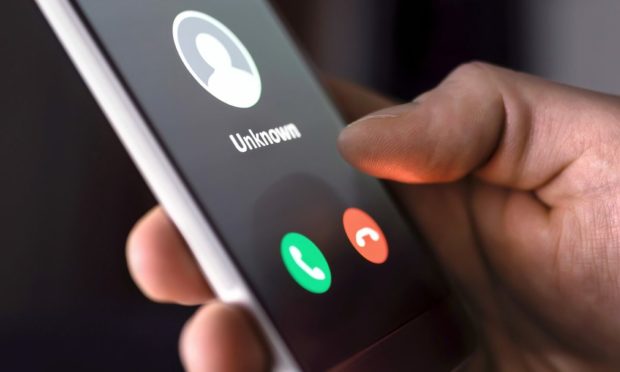John Stewart receives multiple calls from scammers every week, sometimes as many as two per day.
But while he knows how to handle them, he fears for people less confident in being able to tell a bogus call given their increasingly sophisticated methods.
He has spoken out as part of Scottish ScamWatch Week, led by Advice Direct Scotland, to make everyone aware of the lengths the scammers will go to.
The national campaign is working to dispel the myth that only older and more vulnerable people are caught out, with scammers increasingly using e-mails and texts to prey on people of all ages.
Some of the most common scams include fake parcel delivery texts, scammers claiming to be from HMRC, and investment scams such as cryptocurrency offers.
Mr Stewart’s most recent call, he says, was very convincing – with the culprit clearly having done some homework.
The scammer claimed he was Michael Roy from Microsoft, and suggested Mr Stewart had a problem with his computer.
Having had years of experience spotting and dodging scam phone calls, the 73-year-old was immediately suspicious.
‘Sophisticated, pushy and very insistent’
Mr Stewart said: “This one was particularly sophisticated and more pushy. They had all my details, my address, my phone number, they had prepared their case very well.
“The man told me he was Michael Roy from Microsoft, one of their senior technicians, and when I looked him up on the internet later there is a Michael Roy who is a senior technician there.
“He even gave me what he said was his reference number with Microsoft and a phone number to call to confirm his identity.”
As always, Mr Stewart confronted the caller, telling them he knew they were trying to scam him.
Instead of hanging up, as he said they usually would, this caller was more determined than any other.
Mr Stewart, from Blairgowrie, said: “He was very insistent. When I said he was a scammer the phone seemed to go dead, but then he called me back.
“He said ‘you’ve said I’m a scammer, I am very well respected in my profession and I can’t have people calling me a scammer, my reputation is very important to me’.”
Call reported to Trading Standards
Despite trying his usual tricks, like claiming he did not have a computer, the bogus caller kept trying, continuing to accuse Mr Stewart of trying to ruin his reputation.
After he was threatened with his internet being cut off, Mr Stewart ended the call and reported the incident to Trading Standards.
He said he would not usually have taken this step, but the convincing nature of the call made him do so.
Though Mr Stewart is relatively confident in his own abilities to spot a bogus caller, he worries for others.
He recently had a friend at his door in tears after she was contacted by someone claiming she would be taken to court if she did not transfer them money immediately.
He said: “It’s not worried me for myself but it worries me that more people are going to be caught out.
“It will be distressing for people on their own with little or more support.
“This call was different and more sophisticated and I think a lot of people could have been taken by what he was saying and what he was doing.”
‘The reality is anyone can be caught out’
This ScamWatch week, Advice Direct Scotland is highlighting the rise of new scams across the country that are more likely than ever to catch people out.
As the pandemic eases, there has been a rise in the number of reported scams, from bogus workmen to fake council tax calls.
As part of the campaign, free advice on how to avoid scams will be shared across Advice Direct social media channels and on their website.
Scams impact people in Scotland every day, sometimes costing them thousands of pounds.
Reporting a scam to us using our Quick Reporting Tool helps us with our work in protecting people across the country.
More: https://t.co/iQ2uebSIeH#ScamWatch #Scotland #consumer pic.twitter.com/pmYW8tvoUR
— advice.scot (@advicedotscot) August 30, 2021
Some of their top tips include not sharing personal information online, not transferring money online unless you are absolutely sure where it is going, ensuring your computer’s antivirus software is always up to date, and keeping passwords and data secure.
Don’t download any attachments or files in emails or click on any links, and do not ring any numbers you’ve received in an e-mail or letter, especially it is a premium one.
Andrew Bartlett, chief executive of Advice Direct Scotland, said: “The more vulnerable members of our communities are often the preferred targets of scammers because of the belief that they will be easier to deceive, but the reality is that anyone can be caught out.
“Due to an increase in the volume of scam e-mails, text messages, and telephone calls, cyber-scams are on the rise in particular.
“It’s important to remember there is no shame in being scammed, and consumers who are concerned or need help should contact one of our specialist consumer advisers for free, impartial and practical advice.”
To get free advice, call 080 164 6000 or use the web chat or e-mail via www.consumeradvice.scot
